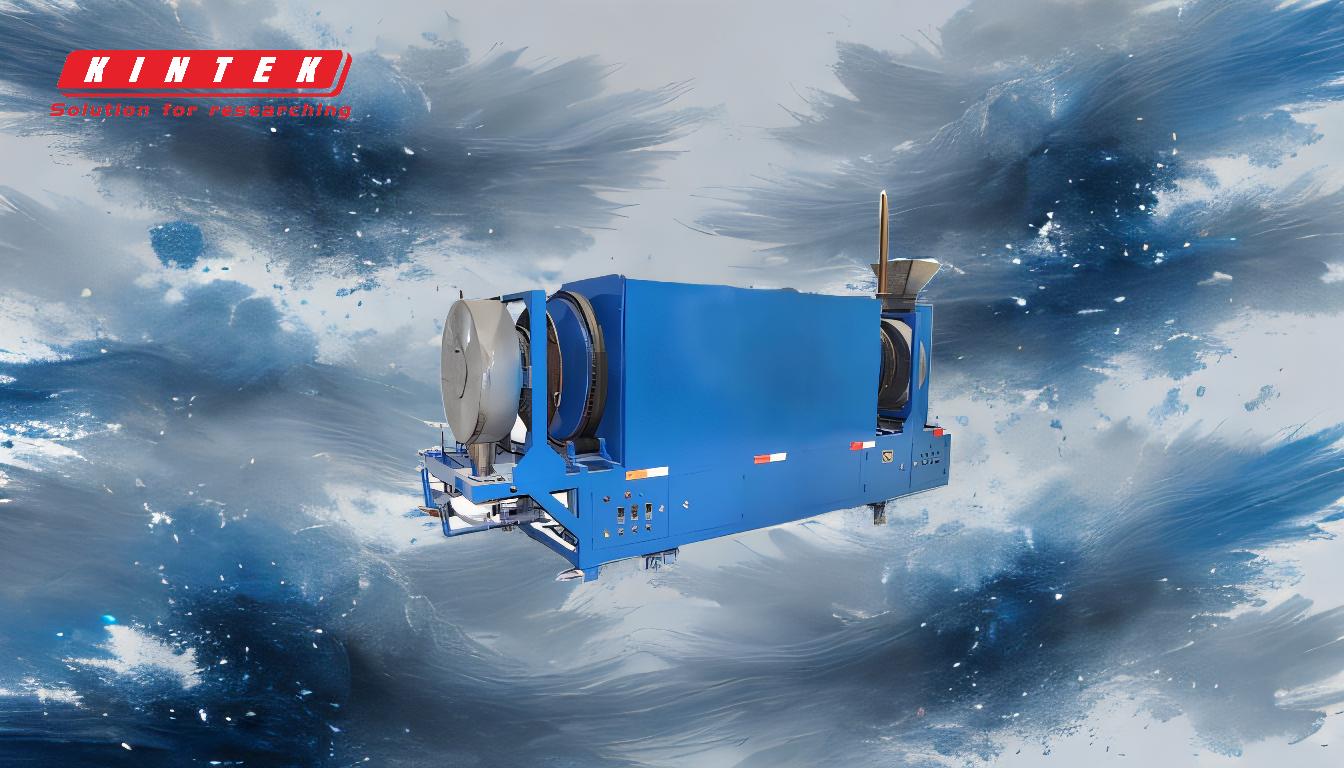The pyrolysis of tires is a thermal decomposition process that breaks down rubber and other materials in tires into valuable end products. The primary products include pyrolysis oil, carbon black, steel wire, and non-condensable gases. Pyrolysis oil can be used as fuel or further refined, carbon black is widely used in rubber products, inks, and asphalt, and steel wire is recycled for manufacturing metal abrasives and other steel-based materials. Non-condensable gases, such as methane and hydrogen, can be used as energy sources. The yield and composition of these products depend on factors like pyrolysis temperature, method, and tire composition. This process not only recycles waste tires but also creates economically valuable materials.
Key Points Explained:
-
Primary Products of Tire Pyrolysis:
- Pyrolysis Oil: A liquid product that can be used as fuel or further distilled for additional applications. It is a significant output, with approximately 300kg produced per ton of tires.
- Carbon Black: A solid residue used in manufacturing tires, rubber products, inks, and asphalt modifiers. About 380kg of carbon black is obtained from one ton of tires.
- Steel Wire: Recycled from the tire structure, steel wire is used to produce metal abrasives and other steel-based materials. Approximately 170kg of steel is recovered per ton of tires.
- Non-Condensable Gases: These include methane, hydrogen, and other hydrocarbons, which can be used as energy sources. Around 150kg of gas, with about 40% methane content, is produced per ton of tires.
-
Yield and Composition:
- The yield of each product depends on the pyrolysis conditions, such as temperature and method. For example, higher temperatures may increase gas production but reduce oil yield.
- The composition of pyrolysis oil, carbon black, and gases can vary based on the tire type and pyrolysis process.
-
Applications of Pyrolysis Products:
- Pyrolysis Oil: Used as an alternative fuel in industrial burners or further refined for higher-value applications.
- Carbon Black: Reinforces rubber products, enhances ink pigments, and improves asphalt durability.
- Steel Wire: Recycled into new steel products, reducing the need for virgin steel production.
- Non-Condensable Gases: Utilized as a source of energy in the pyrolysis process or other industrial applications.
-
Environmental and Economic Benefits:
- Tire pyrolysis reduces waste in landfills and minimizes environmental pollution.
- The process transforms waste tires into valuable materials, contributing to a circular economy.
- The production of alternative fuels and recycled materials reduces reliance on fossil fuels and virgin resources.
-
Factors Influencing Product Quality and Yield:
- Pyrolysis Temperature: Higher temperatures favor gas production, while lower temperatures increase oil yield.
- Tire Composition: The type and quality of tires used affect the composition of the end products.
- Pyrolysis Method: Different technologies (e.g., batch vs. continuous pyrolysis) can influence the efficiency and output of the process.
-
Future Prospects:
- Advances in pyrolysis technology aim to improve product quality and process efficiency.
- The increasing demand for sustainable materials and energy sources is driving the growth of the tire pyrolysis industry.
- Research is ongoing to optimize the process and expand the applications of pyrolysis products.
In summary, tire pyrolysis is a sustainable and economically viable method for recycling waste tires into valuable products. The process yields pyrolysis oil, carbon black, steel wire, and non-condensable gases, each with diverse industrial applications. By optimizing pyrolysis conditions, the industry can further enhance the quality and utility of these products, contributing to environmental sustainability and resource conservation.
Summary Table:
| Product | Yield per Ton of Tires | Key Applications |
|---|---|---|
| Pyrolysis Oil | ~300kg | Fuel, industrial burners, refining |
| Carbon Black | ~380kg | Rubber products, inks, asphalt |
| Steel Wire | ~170kg | Metal abrasives, steel-based materials |
| Non-Condensable Gases | ~150kg | Energy sources, industrial applications |
Transform waste tires into valuable resources—contact us today to learn more!






